Where to dig in?
You’ll need several key gardening equipment to make gardening easier and more productive. Start with quality hand tools including pruners, a trowel, and cultivator for everyday tasks. Add digging tools like a spade and garden fork for bed preparation. Don’t forget watering equipment—a reliable hose and watering wand are must-haves. Maintenance tools such as rakes and hoes will keep your garden tidy. The right equipment transforms challenging garden work into satisfying accomplishments.
Gardening Equipment List
Must-Have Hand Tools for Every Gardener
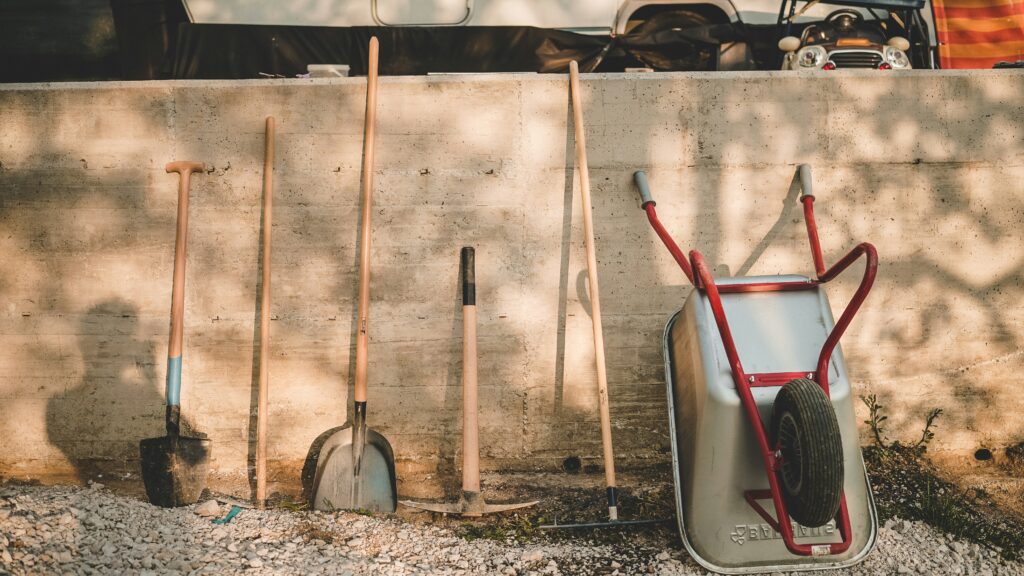
Every successful gardener relies on a collection of quality hand tools to make their work efficient and enjoyable. You’ll need a few essential items to tackle most gardening tasks with confidence.
The right tools transform gardening from a chore into a pleasure, making every task simpler and more satisfying.
Basic Tools:
- Hand pruners with hardened steel blades for cutting branches
- A reliable trowel for planting and transplanting
- Hand cultivator for weeding and loosening soil
- Garden fork for turning compost and aerating soil
Additional Must-Haves:
- Garden shears for tight spaces and precise cutting
- Pruning saw for thicker branches (1-3 inches)
- Garden gloves to protect your hands
- Garden knife for small vines and opening seed packets
Choose tools with comfortable handles, as you’ll use them frequently. Quality materials like forged aluminum or stainless steel will guarantee your tools last for many seasons. Look for versatile options like the Feverfew Garden Gloves that offer both protection and touchscreen compatibility for multitasking in the garden. For tight spaces in your garden, consider adding a hand rake with flexible fan-shaped tines that won’t damage your delicate plants when cleaning up debris.
Digging Tools to Prepare Your Garden Bed
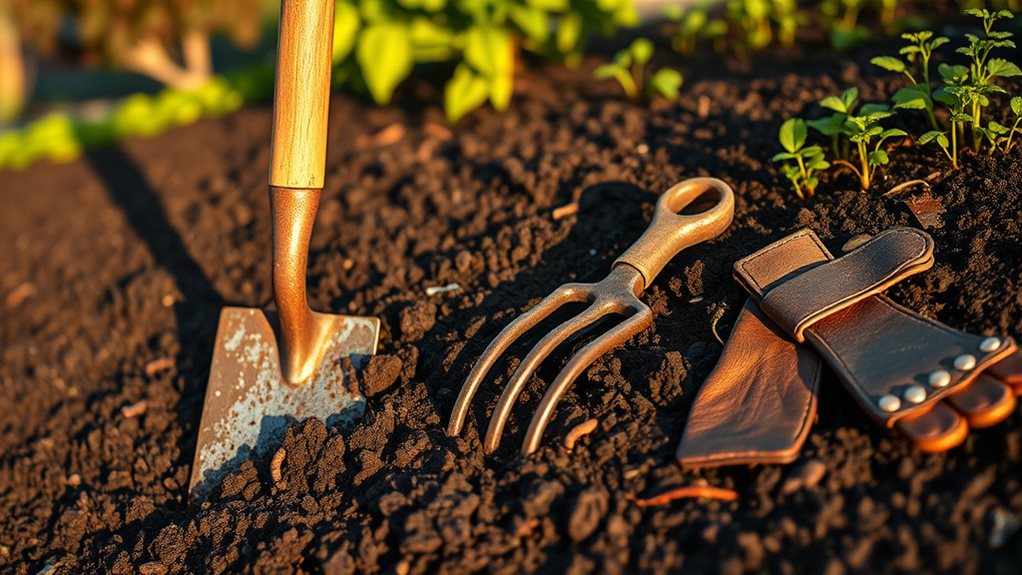
Preparing your garden beds requires more substantial tools than those used for planting and pruning. Select tools based on your soil type and specific needs for best results.
Essential Digging Tools:
- Garden forks with straight tines for compacted or rocky soil
- Spades for general digging tasks and creating clean edges
- Shovels when you need to move large amounts of soil or materials
- Forks with curved tines for turning compost or scooping mulch
Look for ergonomic handles and stainless steel construction to guarantee comfort and durability. Square tines provide greater strength in clay soil, while non-slip grips prevent accidents during use. A digging fork like model PG161 is excellent for soil aeration and encourages beneficial earthworm activity in your garden. For long-lasting performance, consider investing in the Greenman stainless steel border fork which comes with a reassuring 20-year warranty. Don’t forget to maintain your tools by cleaning them after each use and storing them properly to extend their lifespan.
Watering Equipment for Healthy Plant Growth
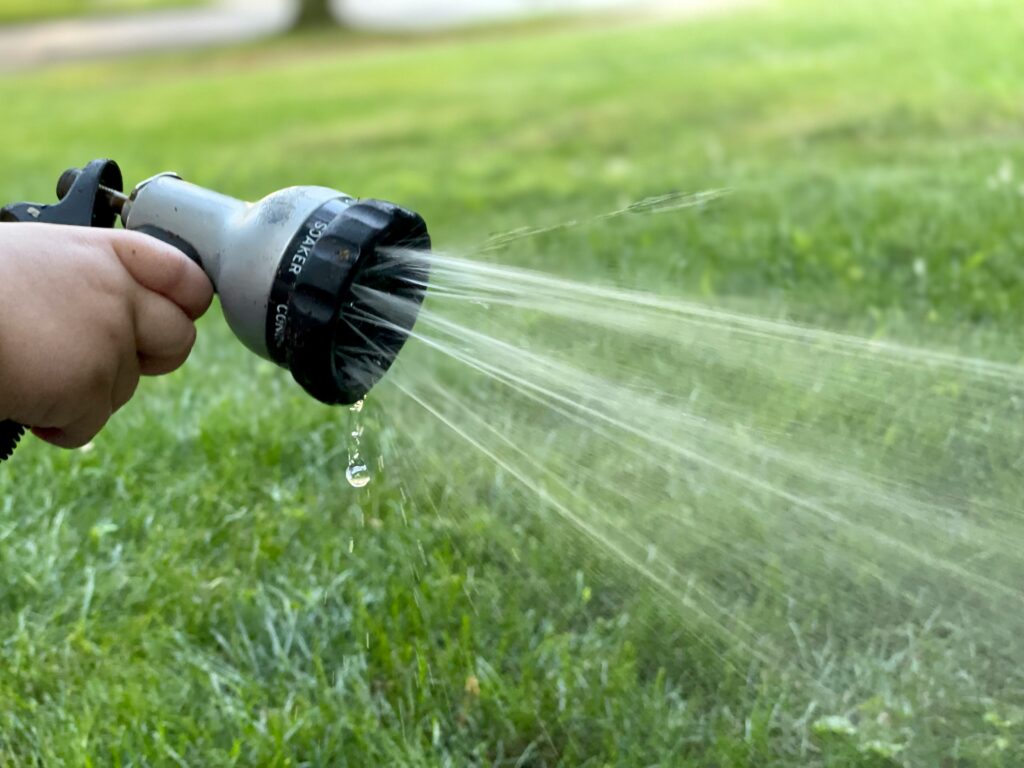
While plants need sunlight and nutrients to thrive, proper watering equipment is equally essential for maintaining a vibrant garden. Choosing the right tools depends on your garden’s size, layout, and the specific needs of your plants.
Efficient Watering Options
- Soaker hoses: Perfect for rows of plants and raised beds, these slowly release water directly to soil, reducing disease risk. Make sure to place them on level ground for even water distribution throughout your garden beds.
- Drip irrigation: Conserves up to 60% more water than sprinklers by delivering moisture precisely to root zones.
- Sprinkler systems: Ideal for lawns and uniform plantings where broad coverage is needed.
- Watering wands: Provide gentle control for delicate seedlings and container plants.
For traditional garden watering, consider kink-resistant hoses like the Teknor Apex Zero-G that offer reliable water flow while being easier to store than conventional options.
Consider your climate and soil type when selecting equipment. Water early morning or evening to minimize evaporation, and pair your system with a timer for consistent results.
Maintenance Tools for Garden Upkeep
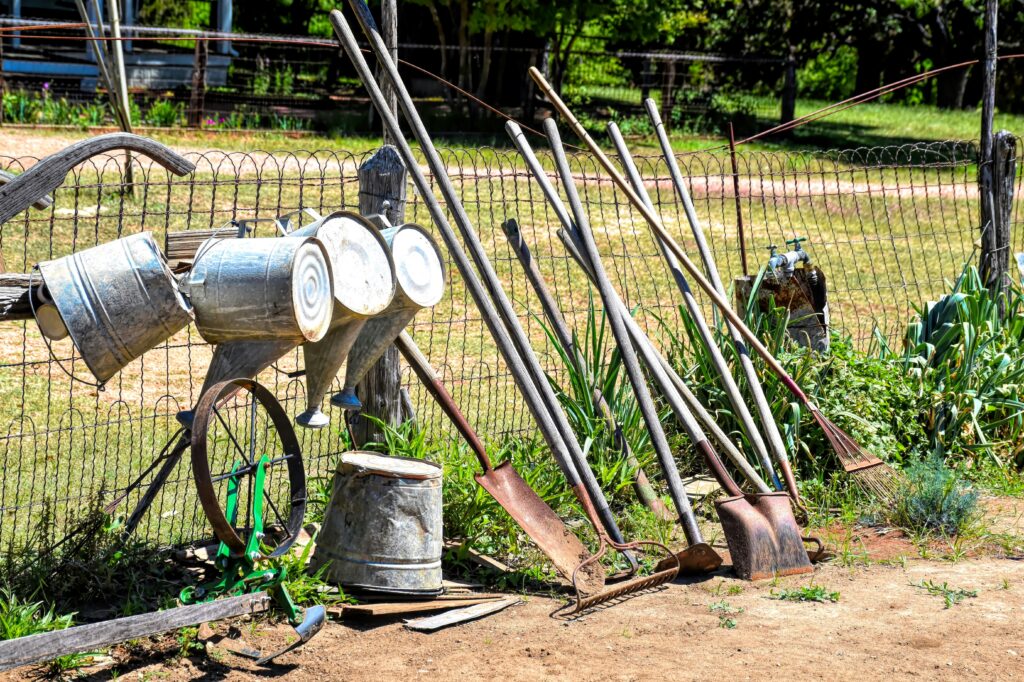
A well-maintained garden requires the right selection of tools to keep plants healthy and the landscape tidy. Essential maintenance tools include gloves to protect your hands from thorns and dirt, and a wheelbarrow or cart for transporting heavy materials around your garden.
Keep your gardening supplies organized in a dedicated gardening bag or tub, making tools easily accessible when you need them. A versatile hori hori knife is excellent for precision weeding and transplanting small plants.
For regular upkeep, you’ll need:
- A sturdy shovel for digging and moving soil
- Rakes for collecting leaves and leveling soil surfaces
- Hoes for effective weed removal without disturbing plant roots
- Pruning tools like hand pruners and loppers for trimming branches
When using a rake for garden maintenance, maintain a straight back and avoid overreaching to prevent strain while collecting leaves and debris.
Don’t forget basic irrigation tools to maintain your watering system, ensuring plants receive consistent moisture throughout the growing season.
Specialty Garden Tools Worth the Investment
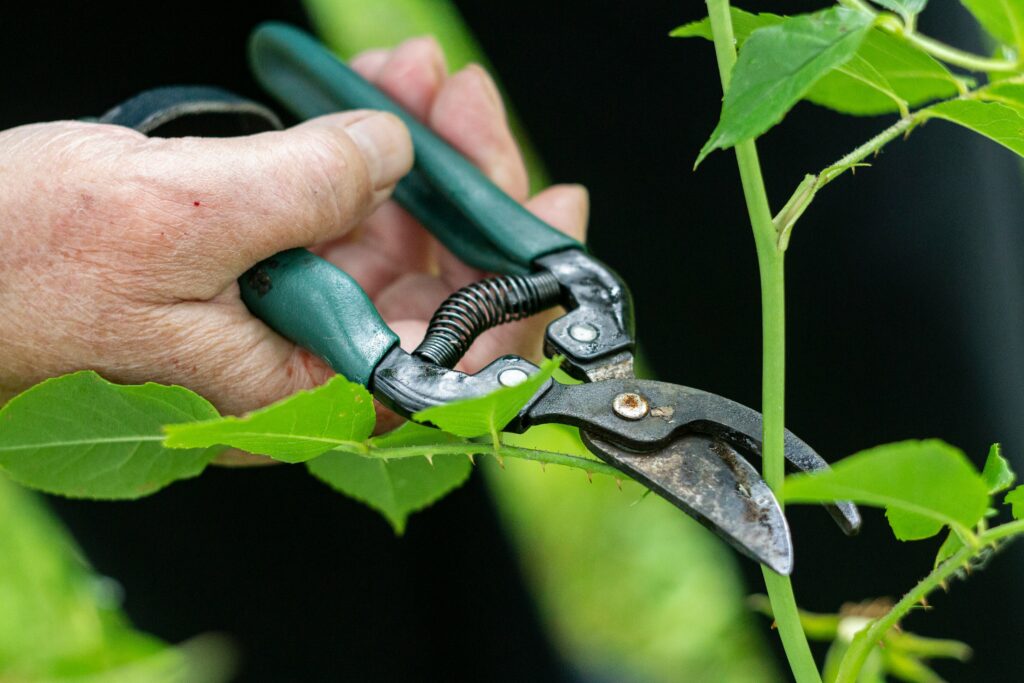
Beyond the basic garden implements, serious gardeners often discover that specialty tools can transform difficult tasks into manageable ones. As your gardening skills advance, you’ll find that investing in high-quality specialty equipment conserves time and lessens physical strain.
- Ergonomic pruning shears with rotating handles – These reduce wrist fatigue during extensive pruning sessions while providing clean cuts that promote plant health. The rotating handle preferred design is especially beneficial for gardeners with hand tenderness or arthritis issues. Professional gardeners often recommend Felco models for their exceptional durability and reliable performance.
- Garden fork with square tines – Perfect for breaking up dense or clay soils that regular tools struggle with
- Fruit saw with stainless steel blade – Makes precise cuts on larger branches without damaging surrounding tissue
- Multi-seed dibber – Guarantees consistent planting depth and spacing, significantly improving germination rates
Choose tools with rubberized grips and stainless steel components for longevity and comfort during extended use.
Frequently Asked Questions
How Often Should I Clean and Maintain My Gardening Tools?
Clean your tools after each use to remove dirt. For daily-use tools, sharpen them weekly; if you garden occasionally, monthly sharpening works fine. Perform these maintenance steps:
- Brush off soil immediately after use
- Dry thoroughly to prevent rust
- Apply light oil to metal parts
- Store in a dry location
Seasonal deep cleaning (late fall or early winter) helps assess tool condition. Remember, well-maintained tools make gardening easier and extend your equipment’s lifespan.
Can Gardening Tools Be Used for Indoor Plants?
Yes, you can definitely use gardening tools for indoor plants! Many outdoor tools work well indoors, especially:
- Transplanting trowels for repotting
- Pruners for trimming leggy growth
- Hand forks for aerating potting soil
Specialized indoor gardening tools like 7-in-1 plant care sets are designed specifically for houseplants. You’ll find that smart soil sensors and grow lights enhance your indoor gardening success, making plant care easier and more precise in your home environment.
What’s the Best Storage Solution for Garden Equipment?
For weather resistance, you’ll want to invest in marine-grade plywood storage with rubber gaskets and slanted shelves to prevent water damage. Adjustable shelving with grated bottoms keeps your tools organized while preventing dirt buildup.
Consider these practical options:
- Multi-functional benches with hinged tops
- Under-deck pull-out units for larger tools
- Vertical organizers for narrow spaces
- Slatwall panels for efficient hanging storage
Don’t forget ventilation slots to prevent mold!
Are Electric Gardening Tools Better Than Manual Ones?
Whether electric tools are better depends on your situation. You’ll find electric tools more efficient for big, repetitive jobs like hedge trimming, while manual tools excel at precision tasks. Electric options save time but cost more upfront and need charging or outlets.
Manual tools are cheaper, more reliable in wet conditions, and need less maintenance. Consider your garden size, budget, and the specific tasks you’ll tackle before deciding which to invest in.
How Should I Choose Tools for Specific Soil Types?
Choose your gardening tools based on your soil type:
- For clay soil, you’ll need a cultivator to break up clumps, and a sturdy shovel for mixing amendments.
- If you have sandy soil, invest in a garden fork for aeration and a watering can for consistent moisture.
- For loamy soil, a garden rake and hoe will serve you well.
- Test your soil first, then select tools that address your soil’s specific challenges.
Conclusion
You’re now equipped to create your ideal garden! By investing in these essential tools, you’ll save time and effort while ensuring your plants thrive. Start with the basics, then gradually add specialty items as your gardening skills develop. Remember, quality tools may cost more initially, but they’ll serve you for years to come. Keep your equipment clean, properly stored, and you’ll be rewarded with a beautiful, productive garden.

